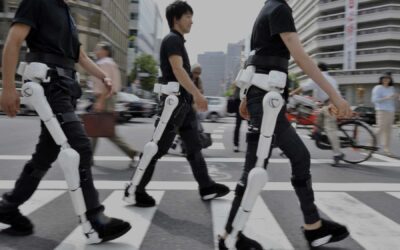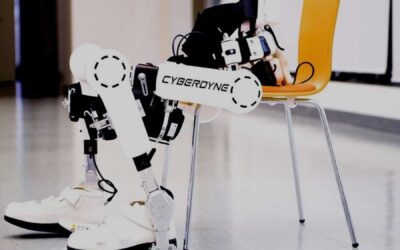Competing with new and advanced technology is very crucial in healthcare. Cyberdyne treatment in India is one such achievement that the country’s medical industry has. Therefore, your mobility journey starts with HAL.
This brain-controlled robotic arm – from Cyberdyne, requires no surgery and is accessible to robotically guide stroke rehabilitation both in the clinic and at home.
HAL [Hybrid Assistive Limb] is the world’s first technology that enhances and regenerates the wearer’s physical functions according to the wearer’s intentions. Due to this quality, it is also known as a “Wearable Cyborg™
Robotics Rehabilitation System

Rehabilitation Robotics is a system of examination dedicated to understanding analysis with the use of robotic devices. Use of such rehabilitation robots in physical therapy, providing expansion in the use of advanced devices tailored for assisting the various sensor motor functions – like a hand, arm, leg, and ankle, assessment of the sensorimotor performance of the patient – ability to move and development of different schemes of assisting therapeutic training. Robotic rehabilitation after a stroke provides the potential to increase and carefully control the dosage of therapy.
Functional regeneration robotics using HAL is a new technology in the world of treatment, enabling the improvement of human brain-nerve-musculoskeletal functions by activating the body’s self-healing ability that humans naturally possess. A condition has to be fulfilled before a patient is dressed in the HAL suit.
Because the HAL is just a conversion device, it needs the body of the patient to offer sufficient electrical signals, which means the nerves connecting the legs of the patient to the brain must still be slightly “alive.” The artificial limb builds on the body’s natural ability to heal itself. The HAL only needs the patient to offer a percentage of the work; from there, the HAL can use the patient’s intentions to produce results.
Cyberdyne Treatment –The Robot-assisted therapy in stroke rehabilitation
Stroke rehabilitation integrates a variety of treatment strategies, with varying degrees of evidence-based support. Treatment often incorporates repetitive exercise to facilitate motor learning and build muscle strength.
In the acute phase, treatment may integrate a passive range of motion to maintain the integrity of physical structures in anticipation of subsequent neurological recovery.
Rehabilitation by Cyberdyne Treatment

The Wearable Cyborg™uses brain waves to power up your muscles
Robot-enhanced stroke therapy optimises rehabilitation. Rehabilitation of such robots frequently by patients set up a valuable adjunct to therapy in persons, who suffer from motor impairments, mainly due to stroke.
The robotics also approve patients suffering from numerous types of illness or disease, including amputations, cancer, arthritis, orthopaedic injuries, cardiac disease, neurological problems, spinal cord injuries, stroke, and traumatic brain injuries. Patients with rigorous paresis can be given with rive movement of the upper limb, via robotic rehabilitation.
Robots are supported by the weight of a limb for patients with some movement power due to the physical interaction between the subject and the robot. One application of robot-assisted therapy is the improvement of gait function in patients with stroke.
For more on Cyberdyne treatment connect with us at https://rehabmodalities.com/



